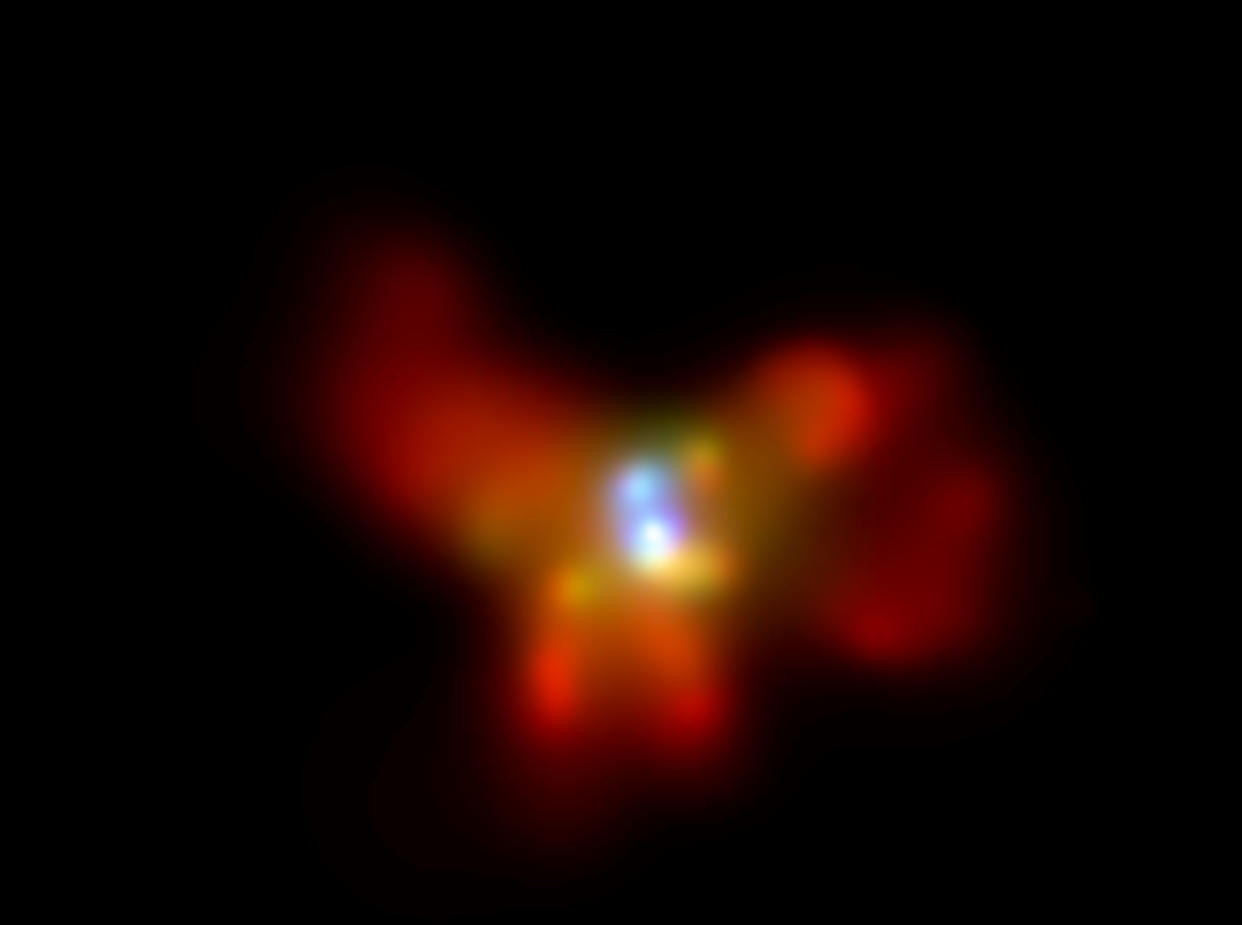‘Hidden’ black hole the size of 90 million suns spotted colliding with two others

Three vast black holes, each the size of 90 million suns, have been spotted hurtling towards each other at speeds of several hundred miles per second.
Researchers from the University of Göttingen spotted three vast black holes hurtling into each other in the galaxy NGC 6240.
Previously, scientists believed that the galaxy’s odd shape was caused by two black holes at its centre.
READ MORE
Binary Earth-sized planets possible around distant stars
Insects could die out in ‘worst exctinction since the dinosaurs’
NASA satellite captures incredible beauty of UK seen from space
Why Iran’s nuclear escalation goes unchallenged
The galaxy, 300 million light years away from us, is studied as a way to understand how colliding galaxies interact.
"Through our observations with extremely high spatial resolution we were able to show that the interacting galaxy system NGC 6240 hosts not two – as previously assumed – but three supermassive black holes in its centre," reports Professor Wolfram Kollatschny from the University of Göttingen, the lead author of the study.
The three vast black holes are located in a region of space less than 3000 light-years across, i.e. in less than one hundredth of the total size of the galaxy.
"Up until now, such a concentration of three supermassive black holes had never been discovered in the universe," adds Dr Peter Weilbacher of the Leibniz Institute for Astrophysics Potsdam (AIP).
"The present case provides evidence of a simultaneous merging process of three galaxies along with their central black holes.”
The discovery of this triple system is of fundamental importance for understanding the evolution of galaxies over time.
Dr Peter Weilbacher says, "If, however, simultaneous merging processes of several galaxies took place, then the largest galaxies with their central supermassive black holes were able to evolve much faster.
"Our observations provide the first indication of this scenario.”

